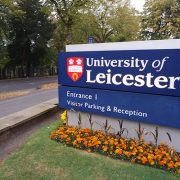Related to GHaNA Project (The Genus Haslea, New marine resources for blue biotechnology and Aquaculture), Prof. Andrzej Witkowski from the University of Szczecinski, Poland conducted a secondment of research at Universitas Tanjungpura on 9 February 2020 to 9 March 2020. The summary of the secondment activities carried out by Universitas Tanjungpura lecturers is as follows:
The objective of this secondment was for laboratory training visit in the laboratory of Palaeoceanology, Uniwersytet Szczecinski – Poland under supervisor Prof. Andrzej Witkowski and co-supervisor Dr. Romain Gastineau. Ikha SAFITRI learns concerning morphology based identification of diatoms in light microscopy and electron microscopy (SEM) and performs several molecular biology methods such as extraction of total DNA, Polymerizing Chain Reaction (PCR), phylogeny tree, and gene squencing.
During this training visit, Universitas Tanjungpura lectures was performed several methods, including morphology based identification of diatoms using light microscopy and electron microscopy. Various samples of marine diatom from Canary Island were used for species identification. The extraction of total DNA and PCR for molecular barcoding, we used samples of Haslea, other diatom strains, flora and fauna. Furthermore, they performed the phylogeny of single and multigene, and introduction to next generation sequencing and bioinformatic treatment of the data. These stages are the initial part to study of marine diatom diversity.
The aim of this secondment was for laboratory training visit in the Department of Plant and Environmental Sciences, University of Copenhagen, Denmark. Ridho BRILLIANTORO learns and performs a variety of molecular biology techniques, such as Polymerase Chain Reaction (PCR), cloning and yeast transformation.
During this training visit, various methods have been carried out, including preparation the starting vectors (plasmid isolation), PCR amplification of two genes from marine resources, USER (Uracil-Specific Excision Reagent) cloning reaction (vectors construction), the transformation of competent Escherichia coli cells with constructed vectors, and colony PCR. Different colonies were used for plasmid extraction. Final constructs were verified with restriction digestions. Then the yeast transformation is carried out. These stages are the initial part to achieve biotechnological production of Highly Branched Isoprenoids (HBIs) in yeast.



